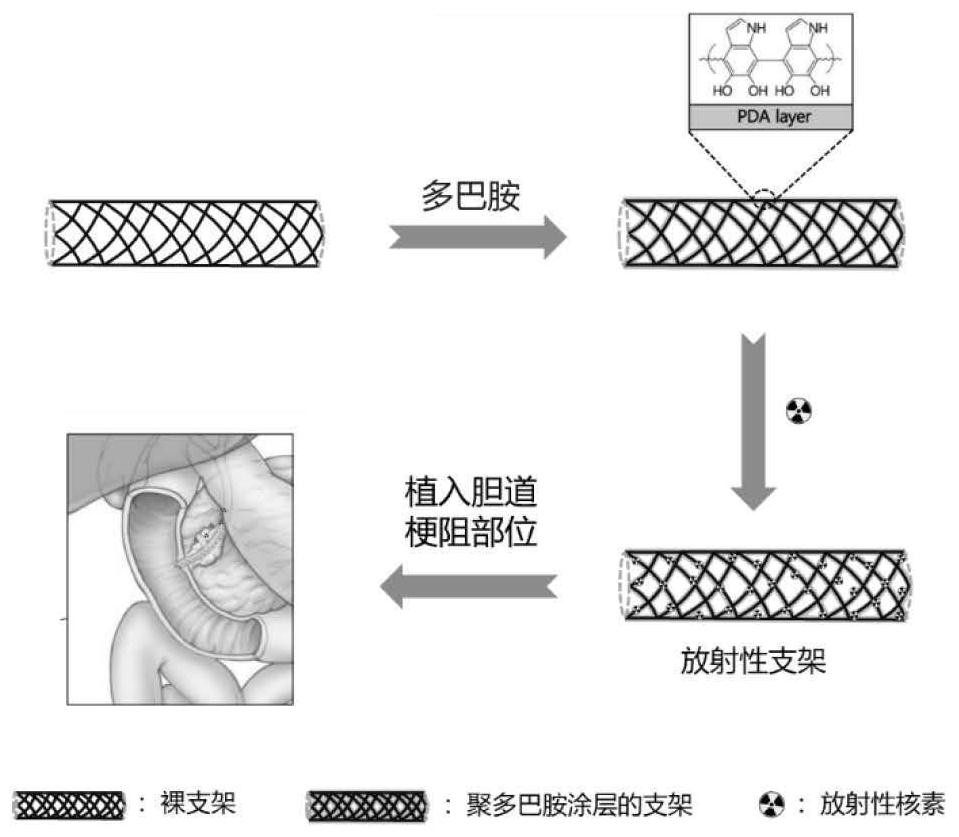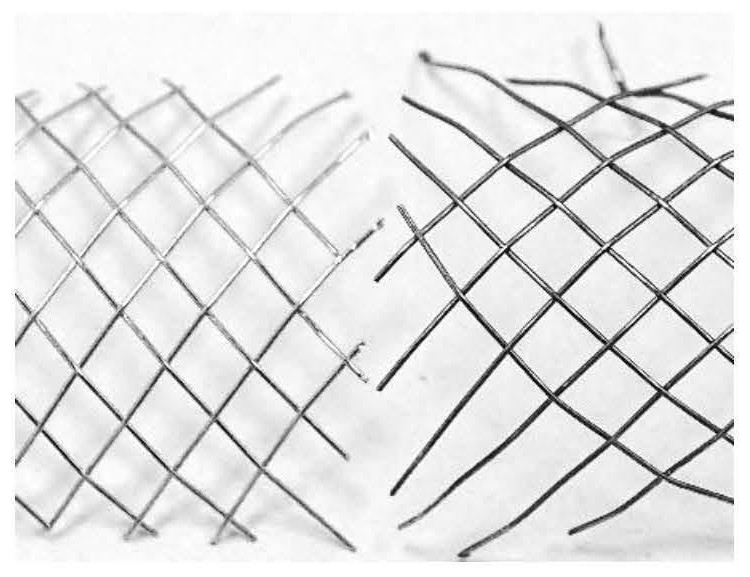Radioactive lumen stent and preparation method thereof
A radioactive and radionuclide technology, applied in the field of radioactive lumen stents and their preparation, can solve the problems of increased treatment costs and risks, poor radiation dose uniformity, harsh production conditions, etc. The effect of simple production cost and production method
- Summary
- Abstract
- Description
- Claims
- Application Information
AI Technical Summary
Problems solved by technology
Method used
Image
Examples
Embodiment 1
[0056] This example is marked with a polydopamine coating 131 I nuclide radioactive stent (referred to as stent@PDA- 131 I) and its synthetic method are examples.
[0057] The principle of polydopamine labeling iodine: polydopamine coating labeling iodine-131 nuclide radioactive stent, firstly, polydopamine coating self-polymerizes on the surface of bare metal stent, and then uses sodium periodate to further oxidize polydopamine coating for labeling The chemical form of radioactive iodine is Na 131 I, I- must be oxidized to the high-valent oxidation state I 2 or I + In order to label organic compound molecules. Oxidation of Na using chloramine T 131 I, chloramine T (N-chloro p-benzenesulfonamide sodium salt), produces hypochlorous acid in aqueous solution, hypochlorous acid can I - Oxidized to I 2 , I 2 Na 131 After I is reduced by chloramine T into high-priced iodine-131 simple substance, the ortho-carbon of the phenolic hydroxyl group of polydopamine is electrophili...
Embodiment 2
[0072] This embodiment is labeled with polydopamine coating ligand 131 I radioactive stent (referred to as Tyr-stent@PDA- 131 I) and its synthetic method are examples.
[0073] In the Tyr-stent@PDA-131I of this example, the ligand is Tyrosine (Tyrosine), and Tyrosine is first bound to the polydopamine coating on the surface of the stent through Michael addition reaction, 131 The I label is through its electrophilic attack on the ortho-carbon of the phenolic hydroxyl group of tyrosine, so that the 131 I marks on the surface of the stent. Iodine labeling by tyrosine is 131 Conventional method of labeling of I.
[0074] The preparation method comprises the following steps:
[0075] (1) The stent was ultrasonically cleaned in isopropanol and ultrapure water for 10 min each. Weigh 10 mg of dopamine in a glass bottle, add 5 mL of Tris-HCl (pH 8.5) buffer solution into the glass bottle to make a 2 mg / mL dopamine solution, completely immerse the stent in the dopamine solution, a...
Embodiment 3
[0082] In this embodiment, the polydopamine coating has a ligand label 131 I radioactive stent (referred to as Tyr-stent@PDA- 131 I) and its synthetic method are examples.
[0083] In this embodiment Tyr-stent@PDA- 131 In I, the ligand adopts tyrosine (Tyrosine), and tyrosine is first combined on the polydopamine coating on the surface of the stent by Michael addition reaction, at this moment, 131 I electrophilically attacks the ortho-carbon of the phenolic hydroxyl group of tyrosine, thereby 131 I is labeled on the surface of the scaffold, which is a ligand-labeled method for iodine-131.
[0084] The preparation method comprises the following steps:
[0085] (1) The stent was ultrasonically cleaned in isopropanol and ultrapure water for 10 min each. Weigh 10 mg of dopamine in a glass bottle, add 5 mL of Tris-HCl (pH 8.5) buffer solution into the glass bottle to make a 2 mg / mL dopamine solution, completely immerse the stent in the dopamine solution, and react at room temp...
PUM
| Property | Measurement | Unit |
|---|---|---|
| concentration | aaaaa | aaaaa |
Abstract
Description
Claims
Application Information
 Login to View More
Login to View More - R&D
- Intellectual Property
- Life Sciences
- Materials
- Tech Scout
- Unparalleled Data Quality
- Higher Quality Content
- 60% Fewer Hallucinations
Browse by: Latest US Patents, China's latest patents, Technical Efficacy Thesaurus, Application Domain, Technology Topic, Popular Technical Reports.
© 2025 PatSnap. All rights reserved.Legal|Privacy policy|Modern Slavery Act Transparency Statement|Sitemap|About US| Contact US: help@patsnap.com



